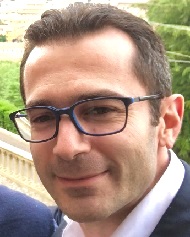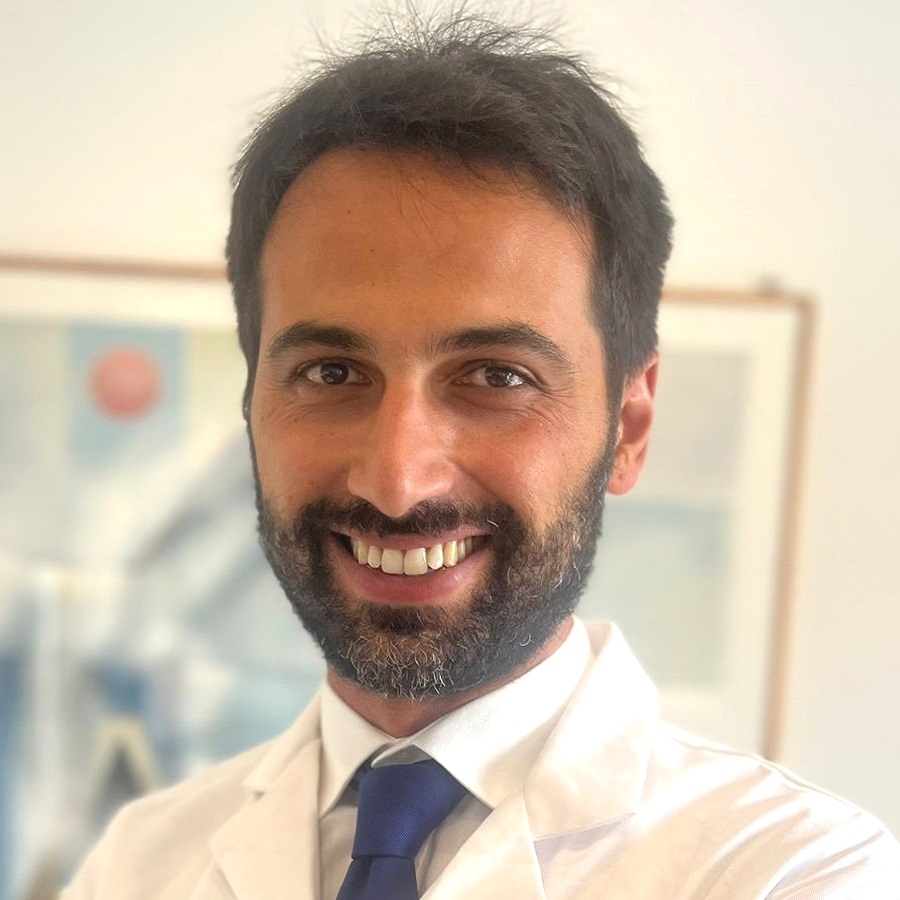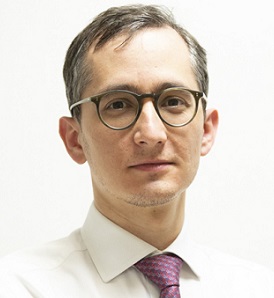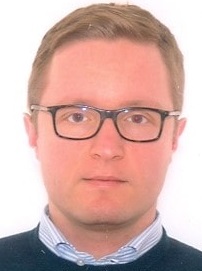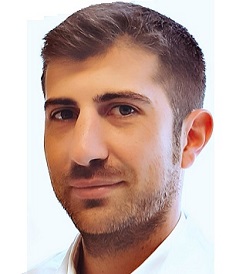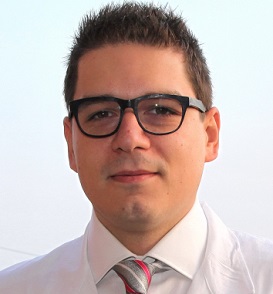Introduction
The Unit of Spine Surgery, is a division dedicated to the diagnosis and the treatment of all rachis pathologies (ranging from oncological problems to infectious, from degenerative to post-traumatic, from severe deformities of the child to those of the adult). It is currently led by Dr. Alessandro Gasbarrini and is equipped with 24 beds.
The current Department of Vertebral Surgery, directed by Dr. Alessandro Gasbarrini, was born from the merger of the Operative Unit of Vertebral Surgery to address Oncological and Degenerative (born in 2009 and entrusted to the direction of Dr. Stefano Boriani, student of Prof. Campanacci) and the historical department of Rachis Surgery, originally "Scoliosis Center" of the Division directed by Prof. Leonardo Gui and entrusted to Prof. Romolo Savini.
The clinical and scientific activity of Prof. Savini between the 70’s and the 80’s (with his assistants of the time Dr. Stefano Cervellati, Dr. Patrizio Parisini, Dr. Alfredo Cioni) brought the Bolognese vertebral surgery to the international attention. In particular with the study and treatment of column deformities in rare diseases. The Rachis Surgery Unit was then directed by Dr. Patrizio Parisini and later by Dr.ssa Tiziana Greggi.
Prof. Mario Campanacci, Director of the Orthopedic Clinic I (which became the most important Italian center in the treatment of bone tumors from the 70s onwards) gave the task of studying spinal neoplasms to Dr. Stefano Boriani in the 80s: Since then, thanks to clinical research, the development of new techniques, international connections, an experience has developed that has led the Rizzoli Orthopedic Institute to the world leaders in the treatment of vertebral tumors. Within the international register of AO SPINE (an international interdisciplinary scientific society that gathers the leading experts in the field), Rizzoli’s case studies are the most numerous.
Clinical activity
The clinical activity concerns the field of spinal column pathologies, particularly:
- Oncologic pathologies: primary and secondary tumors of the mobile rachis and the sacrum, hematopoietic tumors with vertebral localization;
- Degenerative pathologies: degenerative discopathy of the lumbo-sacral rachis, herniated lumbar disc, spondylolisthesis, thoracic-lumbar stenosis, herniated thoracic-rachis disc, pathologies of the cervical rachis;
- Deformity in children (EOS: Early Onset Scoliosis), adolescent (adolescent idiopathic scoliosis) and adult, as well as various other types of deformities associated with rare diseases, congenital, syndromic or neuromuscular;
- Traumatic fractures and insufficiency fractures (osteoporosis);
- Vertebral infections, which are treated in close collaboration with the Infectious Diseases Department of Hospital S. Orsola Malpighi, directed by Prof. Pierluigi Viale.
Along the years, numerous surgical techniques and innovative instrumentations have been introduced, developed and perfectioned, allowing to intervene effectively, through both radical and mini-invasive surgical procedures, depending on the case and on the treated pathology.

For the vertebral reconstruction, “custom-made” vertebral prostheses in titanium have been recently designed at our Structure, and realized in collaboration with the Technological Institute of the Canary Islands; created through a 3D printing process starting from the pre-operative CAT images of the patient, such prostheses present the advantages of a perfect adaptation to the patient’s anatomical structure, and of a reduction of surgical times. Their stability, compared to commercial prostheses, is under evaluation through a clinical study approved by the Ethical Committee of the IOR.
In parallel, several modern techniques of mini-invasive surgery have been developed and applied, allowing a percutaneous access for the insertion and fixing of peduncular screws in the rachis, the insertion of synthetic cement in a vertebra (vertebroplasty) and the abscission of both newly formed and older tissue, in case it compresses the nervous structures, possibly causing disabilities and/or pain. 
These techniques allow to perform surgical interventions that are less burdensome for the patient, during both the procedure and the post-operative recovery; they can be applied to the treatment of several types of pathologies, both oncologic (palliative intervention, asportation of benign tumors) and degenerative (insufficiency fractures, herniated disc, degenerative discopathies).
A dissemination video (in Italian) was dedicated to the treatment of degenerative pathologies of the spinal column, addressing patients and non-specialist fellow doctors, having to evaluate this kind of pathology that are always more frequent among the population, due to the increase in average life expectancy.
The expertise gained along the years by the Equipe doctors have led to the development of diagnostic evaluation and therapeutic planning procedures, which are progressively perfectioned and updated:
- A staging system for primary tumors of the spinal column according to WBB (Weinstein-Biagini-Boriani);
- An evaluation system for vertebral instability in patients suffering from spinal tumors, especially metastases (SINS score);
- An algorithm for the management of vertebral metastases, providing a multi-disciplinary approach realized through the collaboration of our team with other teams of specialist oncologists and radiotherapists from different city hospital and structures;
- An algorithm for the treatment of spondylodiscites (infections of the spine column), also providing a multidisciplinary approach in strict collaboration with specialists in infectious diseases, and the utilization of modern diagnostic imaging techniques (PET-CAT);
- An accurate evaluation of hospitalized patients, and the planning of the programmed surgical interventions, through a daily, views-exchanging meeting among all Doctors of the team, together with nursing personnel and rehabilitation therapists;
- A collaboration with other therapeutic Centers in Bologna and in Italy (the Hospital “Maggiore” of Bologna for selective arterial embolization; the Hospital “Bellaria” and the General Hospital “S. Orsola” of Bologna for oncologic and radiotherapeutic treatments; the Center for Hadrontherapy – CNAO – of Pavia for hadrontherapy with carbonium ions, and so forth);
- The development of international relationships with the main Oncology and Spine Surgery centers (National Center for Spinal Disorders, Budapest; UMC Utrecht; Mayo Clinic, Rochester; MD Anderson Cancer Centre, Houston; Vancouver Spine Center; John Hopkins, Baltimore; Dartmouth-Hitchcock Medical Center, Lebanon, New Hampshire) and of surgical collaboration with numerous hospitals in Italy and abroad (Turin, Padua, Florence, Pisa, Catania, Narni, Campo S. Piero, Verona, Thiene, Giulianova, Modena, Udine, Munich, Murnai, Tutzing, Den Haag, Oviedo);
- The participation to international conventions and meetings, to remain at the forefront of therapeutic and surgical progresses.
Research activity
The Unit of Spine Surgery is the reference center for AOSpine International, a scientific association of vertebral surgeons gathering over 40.000 members worldwide, and favorite destination for all-around specialists for the study and in-depth analysis of the surgical techniques applied.
The scientific activity has consisted in over 100 publications from 2009 to 2017, and numerous participations to international conventions.
In the last few years, the Unit of Spine Surgery prevalently Oncologic and Degenerative has organized some conventions of relevant scientific interest under the aegis of the Rizzoli Orthopedic Institute:
- Theoretical-practical course for operating room personnel – Nursing Round, which has reached its 9th edition;
- Degenerative pathology of the rachis: which-how-when-why, IOR, Sept. 10th, 2015;
- Biomaterials and biotechnologies in orthopedic surgery. IOR, Feb. 17th, 2017.
- Patient’s safety in orthopedic surgery. Is this checklist any useful? IOR, Feb. 9th, 2018.
In addition, starting from 2010, numerous spontaneous and sponsored clinical studies, both monocenter and multicenter, have been launched under the responsibilities of the Unit’s doctors, and approved by the IOR Ethical Committee: to date, accurate data are being collected through internal databases and international registries, offering a significant support to scientific research. In particular, the Division participates to the international multicenter Registry for the collection of data on primary tumors of the spinal column (PTRON) and to the international multicenter Registry for the collection of data on metastatic tumors of the spinal column (MTRON), both promoted by the international scientific Association AOSpine Foundation; to the international database for spinal column pathologies “SpineTango”, promoted by the International Association EuroSpine; to the international multicenter study promoted by the Italian Sarcoma Group on the comparison between surgical and radiotherapy treatment of the sacrum chordoma.
Staff
Medical staff
Other personnel


Contacts and Locations
Istituto Ortopedico Rizzoli
via G.C.Pupilli, 1
40136 Bologna (Italy)


